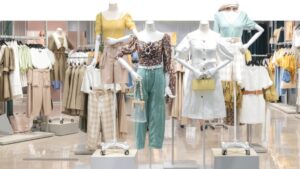Held for the second time in Atlanta, Georgia and co-located with JEC Americas, the show created a dynamic synergy of technical textiles, nonwovens, textile machinery, composites, sewn products and equipments under one roof. With over 759 exhibitors from 29 countries the event attracted around 9,039 visitors a 45.8% increase from 2012. Dennis Smith, President of Messe Frankfurt North America, was happy at the burgeoning business in the US. The US sewn products industry is improving and the technical textiles industry continues to prosper, is all good news for the technology companies,” said Smith. Adding strength to the belief that the US garment industry is looking up was a 50 per cent growth of the Supply Chain USA pavilion with 34 exhibitors. “The growth of the pavilion is proof that the US textile and apparel industry is making a positive resurgence in the world market,” reasoned Kristy Meade, Group Show Director, Messe Frankfurt, Inc.
The increased visitation at the recently concluded Texprocess Americas 2014 only validated the steady growth of the “Made in USA” wave in the American subcontinent which though presently only just intrigues the rest of the world, is definitely going to make an impact. Many of the technology providers accepted that the trend is a reality, but the consensus remained that the progress of re-shoring was slow, the categories envisaged to be produced in the region is more high-value and China would be the first country to face the shift because of higher wages and growing domestic market.
Back in the 1960’s roughly 95 per cent of apparel worn in the USA was made domestically, since then a lot has changed, but over the last two year business is trickling back. In fact, in the past few years major designers and retailers such as Brooks Brothers and Saks, as well as dozens of smaller companies, have moved some production back to the US. Walmart has pledged to buy additional US $ 50 billion US-made products including clothing over 10 years, partly by re-shoring. Industry analysts believe that an increasing number of clothing brands and retailers are considering re-shoring in the future.
The 3rd edition of Texprocess Americas will be held on May 3-5, 2016 at the Georgia World Congress Center in Atlanta, Georgia
On the flip side, a recent report by SPESA indicates that although local production has gone up by 12 per cent, no new jobs have been created. Most industry watchers agree that there is no real chance of complete re-shoring, but what people do feel will flourish in the future is technical textiles and its processes, robotic applications in manufacturing and high-end products for sectors like automobiles and US Army. As for the clothing industry, since ‘Made in USA’ products are being perceived with a certain luxury quotient to them and also the customer is willing to pay a higher price for it, it is mostly the high quality fashion in medium quantities which is likely to be produced in the states.
While there is a lot of political influence which is backing the ‘Made in USA’ movement, it is also true that the US President wants to increase the minimum wages by 20 per cent to help the workers. If that happens, garment business will continue to move out of the continent in the future as well to other countries. Another bottleneck in the re-shoring trend is that the supply is still a feeble link and to get even a quote could take a week, additionally since manufacturers are scattered all over the US it makes it difficult to get the material quickly, defeating the purpose of re-shoring.
In the wake of these constraints, what will definitely pick-up and support the garment business is near-shoring with products like knits and fashion that have a short turnaround time moving to Central America and Mexico, both cheaper than mainland America and which can deliver finished goods in 48 hours. Yet, even though companies are re-shoring for speed, most believe that Asia will continue to remain a force. The consensus is that while mass product will still be sourced from Asia – Vietnam, China, Bangladesh and India, menswear will be produced more and more in Mexico and Central America, and also knitwear will step by step shift to the Caribbean and Peru in South America.
For technology providers the trend marks an opportunity to sell automation and very high-end machines, but the volume business still remains in the East, a fact most companies admitted to. The following pages discuss some of the important technologies on display.






